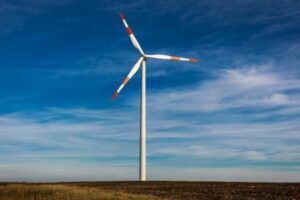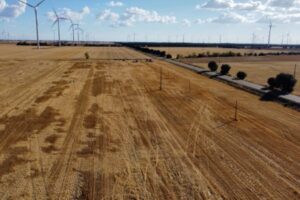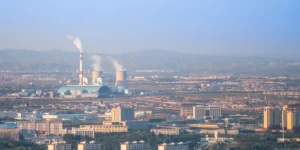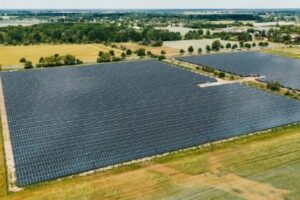Biomass As Fuel Source
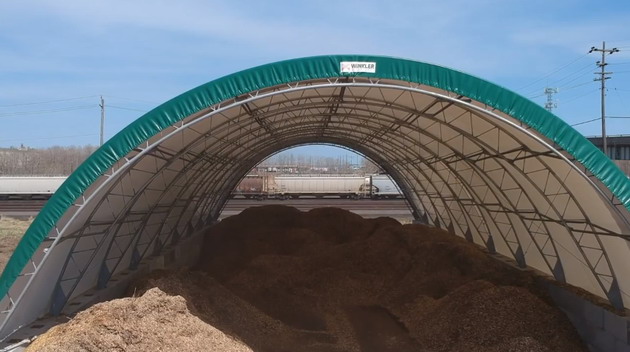
Biomass fuels are part of the carbon cycle on our planet and they have become more and more popular lately, mostly because mankind is trying to reduce its impact on the environment.
Biomass Fuel Definition
Biomass fuel is a term used to describe a group of green fuels that are produced from a variety of materials such as: woody materials (fast growing crops like willow and poplar) plants (rapeseed, hemp, etc.), fast-growing tall grasses, agricultural waste, wood waste from forestry residues, and biodegradable waste (human and animal organic waste).
Biomass fuels are used all over the planet to replace fossil fuels like coal, oil and natural gas for a cleaner environment.
Why Are Biomass Fuels Cleaner Than Fossil Fuels?
Biomass fuels are carbon neutral and they are part of the carbon cycle because the carbon from the atmosphere is absorbed by plants during the photosynthesis process, and when the plant decays or is burned for energy production, that carbon returns to the atmosphere.
Being a cycle, the next crop of plants absorbs that carbon over again, creating a balance between the amount of carbon released by biomass fuels into the atmosphere, and the amount of carbon that they extract from it.
This is the reason why biomass fuels do not add to global warming and climate change, growing them takes carbon out from the atmosphere, while burning them releases the carbon back into the atmosphere to be absorbed (over and over again) by the next crop of plants.
Biomass Fuels Are Renewable
Fossil fuels like coal, oil and natural gas are not considered renewable because they require millions of years and special conditions (extreme heat and pressure) to be produced.
However, biomass fuels are renewable because to produce them, we are converting this year’s crop to fuel, and we are growing the next crop of plants to produce biomass fuels next year.
Renewing the materials used to produce biomass fuels takes just as long as it takes to grow the next crop of plants (months).
Types of Biomass Fuels
Biomass fuels are supplied today in a variety of forms such as: wood logs, wood chips, pellets, sawdust and briquettes.
1. Wood logs
Wood logs are used in many countries, mainly for residential heating and cooking just because wood is a renewable resource, and not because is a clean source of power.
The best wood logs for heat generation are those made of dry and seasoned wood because they produce a smaller amount of smoke when burning, and a larger amount of heat.
Wood logs that release more smoke while burning generate less heat, and this is happening due to the increased amount of moisture in wood (the wood is not dry).
All wood is renewable because is replenished much more quickly than fossil fuels, however, in terms of emissions, burning wood for heating and cooking releases mainly carbon dioxide (CO2), but also carbon monoxide (CO), nitrogen oxides (NOx), volatile organic compounds (VOCs) and water vapor.
2. Wood chips
Wood chips usually come from forestry residues and they include a variety of wood species that arrive to the processing facility in different sizes and forms.
Wood chips are mainly used in industrial heating, but also for residential heating.
To be useful for different heating sources, they need to be cut to certain sizes and shapes, and the level of moisture in the wood is decreased to below 35%.
Burning wood chips also release harmful emissions into the atmosphere, and this is the reason why many power stations burning wood chips and other solid fuels based on biomass are trying to capture carbon and other harmful emissions produced during the burning process.
3. Wood pellets
Wood pellets are manufactured out of sawdust (waste wood generated from timber production and wood product manufacturing) and they are compressed and cut to meet a standard size and shape.
This type of biomass fuel is mainly used for residential heating (in pellet boilers and pellet stoves).
The main ingredient in these pellets being the wood, burning it for heat release will generate greenhouse gas emissions into the atmosphere.
4. Sawdust
Sawdust is a by-product produced by woodworking operations like sawing, milling, routing, planing, drilling and sanding.
Sawdust is also produced by birds and insects such as the woodpecker and carpenter ant.
In terms of energy, the main use of sawdust is for charcoal briquettes and wood pellets production.
Being a biomass fuel, sawdust is burned to generate heat for other milling operations.
5. Briquettes
Biomass briquettes are produced from agricultural waste through compression and are used as fuel for boilers that generate heat in manufacturing plants.
Being produced from biomass, these briquettes produce less emissions compared to coal briquettes.
However, despite the high level of harmful emissions released when burning biomass fuels (where wood is the main ingredient), the fact that this resource is renewable, makes it a good alternative to fossil fuels like coal, oil and natural gas that are finite resources.
How is Energy Generated From Biomass?
Generating energy from biomass always involves combustion (burning) of wood logs, wood chips, wood pellets or other type of biomass, to ensure residential heating and water heating (for domestic use).
However, for large-scale systems (biomass power plant), biomass fuels are used to heat water that will produce steam.
That steam is then used to rotate a turbine and generate electricity using a generator.
Biomass can also be converted into liquid fuels (biofuels) for the transportation sector.
For large-scale electricity generation, an impressive volume of biomass is burned every day, but for residential heating and cooking, a smaller amount of biomass fuels is used especially during the winter to produce hot water and provide heat for homes.
Wood stoves burning wood logs and wood chips, and also pellet boilers burning wood pellets are used for residential heating and cooking.
Larger systems are used to heat community halls, small businesses and other buildings sharing the same heating system.
Combined Heat & Power Systems (CHP), use biomass fuels to generate electricity (spinning a steam turbine), and the waste heat can be used for industrial and residential heating.
Devices Used to Burn Biomass Fuels
1. Log stoves
Log stoves are more stylish today and more efficient than open fires, and they also represent an affordable alternative to heating systems using fossil fuels (coal, oil or natural gas).
2. Log boilers
Log fired boilers are the next step from log stoves, and they are used to provide warm water and heating for the entire house.
3. Pellet boilers
Pellet boilers come in all sizes, from small boilers for domestic use, to big power stations.
Smaller systems are supplied with hopper or filled manually using smaller or larger pellet bags.
4. Wood chip boilers
Wood chip boilers are usually larger than pellet fired boilers because wood chips require a more robust feed and burning system.
They are usually used in blocks of flats, different centers, offices and hospitals.
For these systems, the quality of the wood chips used is vital (boiler manufacturers specify the size and the moisture content of the wood chip).
Requiring less manual handling than logs and less processing than wood pellets, wood chips are considered extremely energy efficient
Biomass Fuels – Storage and Supply
Any device or system used to burn biomass requires a storage facility for the fuel.
Wood logs can be stored outside for seasoning, but they need to be protected from rain.
Air needs to move freely in and out the storage area, to help season the wood.
Wood chips need to be stored in airy areas to help them dry out naturally.
Fresh wood chips have a high moisture content, so keeping them in a covered but airy area is vital.
Wood chip boilers can burn efficiently only if the chips used have a moisture content below 35 percent.
Wood pellets are usually kept inside in plastic bags because they are already dried and ready for use.
Final conclusion
Biomass fuels are based on wood and other forms of biomass, and we all know that dry wood burns cleaner than wood with high moisture content.
If we want to reduce the amount of emissions released into the atmosphere when we burn biomass fuels, we need to use dry wood, wood chips with a level of moisture below 35%, and quality wood pellets.
Only dry wood burns cleaner and in an efficient way, so if you decide to produce hot water and heat up your home on a budget using biomass fuels, be sure that you burn dry seasoned wood and dry wood chips (or wood pellets) because you want to produce heat in a sustainable way, not only smoke and a reduced amount of heat.


